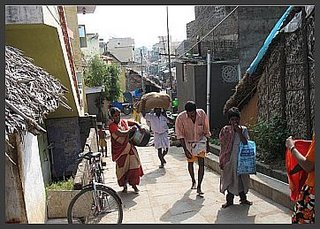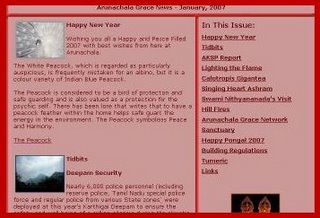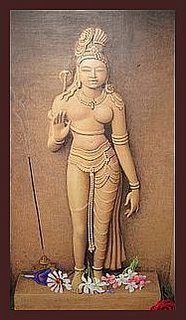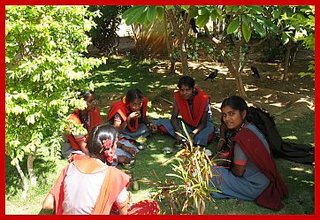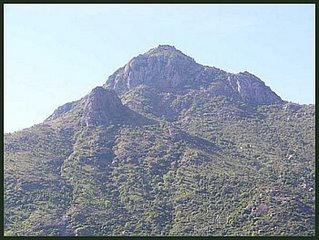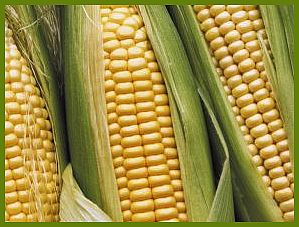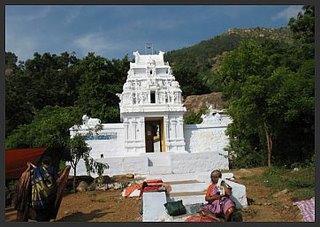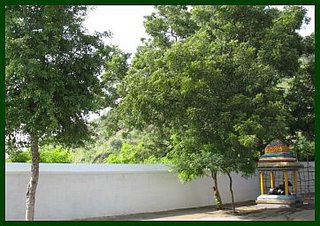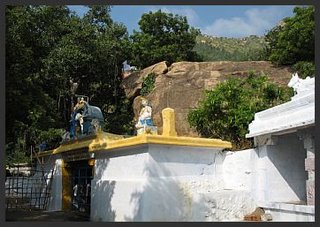Last week I went on a walkabout of the southside of Arunachala Hill. It had been sometime since my last visit, so very much enjoyed my time exploring, chatting and investigating what was happening. There are several pathways leading up to Virupaksha Cave that start from across the West Gate of Arunachaleswarar Temple. The path I took is what is regarded as the main thoroughfare up to the caves.
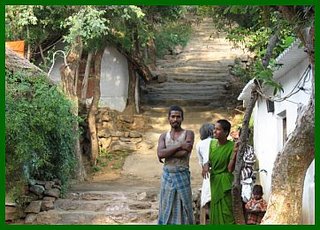
At the beginning of the pathway are huddles of houses, which are in actual fact encroachments that will probably be allowed to remain. As I got further up, the houses thinned out but occasionally spotted a small forest dwelling just off the pathway. This one rather reminded me of the tree dwellers in one of the Star Wars movie!

On the southeast slope across from the Temple is a profusion of caves, small shrines, temples, hutments and tirthams (water tanks).
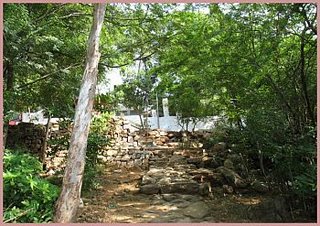
The shrines are beautifully maintained as they receive many visitors and pilgrims who, in the Indian way, give generously whilst on pilgrimage.
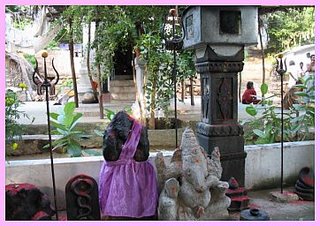
The below photograph is of the inside of the Mango Cave. A famous cave that has been occupied by many saints and sadhus. It was also one of the caves that Sri Ramana Maharshi lived in whilst on the hillside. During his time at Virupaksha Cave, Ramana would (during the hot summer months) generally move to the cooler Mango Cave which also had an ample water supply.
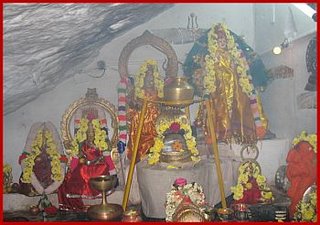
One of the tirthams near the caves.
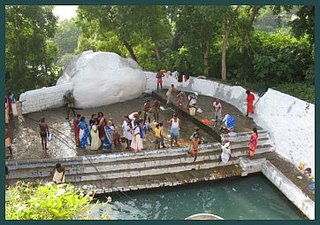
There is always lots of activity at the tirthams. In the below photograph you can see sadhus in the background and in the foreground, pilgrims with shaved heads. The pilgrims probably had their tonsures done at Arunachaleswarar Temple in performance of a vow. After the head is shaved the pilgrim will often cover the head with sandalpaste which is both cooling and also a protection against the sun. It is regarded as very auspicious to take a bath in a water tank around Arunachala. And in this respect some of the specific tanks and the merits accrued from bathing in them are mentioned in the Skanda Purana.
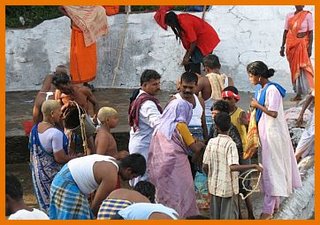
Here is a sadhu colony on the slope.
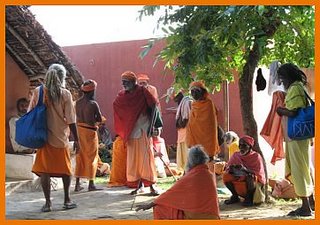
Statue carvers are quite common around Arunachala. Previously they were content in selling their wares off the Chengam Road and near the Temples. But now, due to the huge increase of visiting pilgrims on the pathways surrounding the caves and tirthams on the slope of Arunachala, they have sensibly decided to station themselves where the business end is!
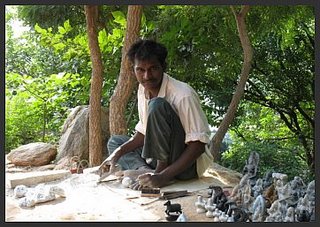
Alot of them are very talented and you can purchase beautifully carved religious icons for a lesser price than in the shops. But remember you are expected to bargain!
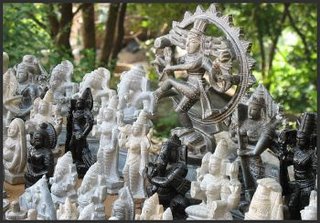
After a pleasing trek around the slopes I take a different pathway back into town.
